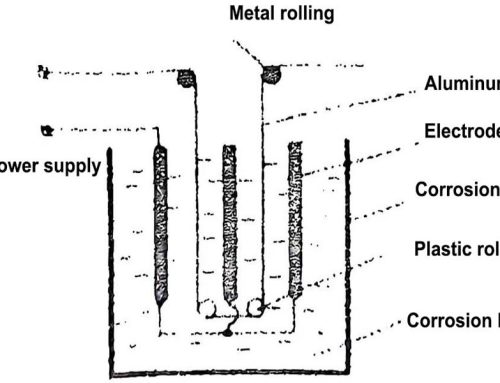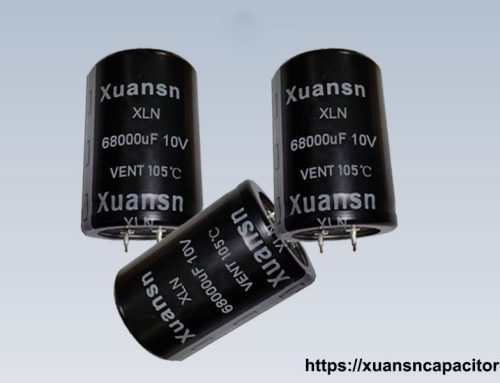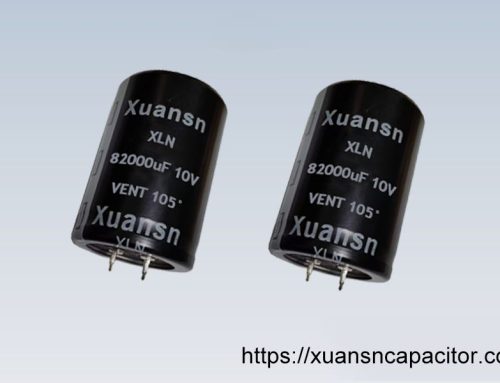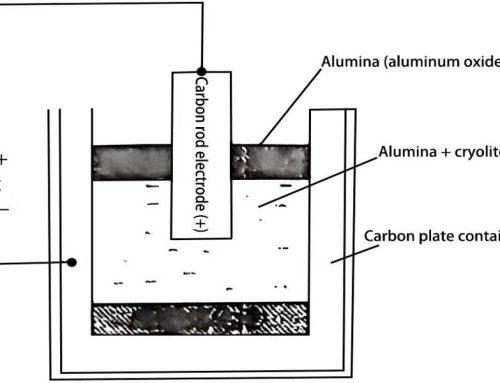1. Axial Lead Electrolytic Capacitor – vibration resistance requirements of electrolytic capacitors
With the rapid development of automotive electronics, the demand for electrolytic capacitors is also growing rapidly. General axial lead aluminum electrolytic capacitorCan it enter the field of automotive electronics and play a normal role? From the perspective of electrical performance requirements, it is possible. If the performance of general-purpose axial lead aluminum electrolytic capacitors cannot meet the requirements, high-frequency low-resistance electrolytic capacitors can be used, or even solid electrolytic capacitors can be used; if long life is required, long-life products can be used. But these Axial Leaded Electrolytic Capacitor Does it meet the performance requirements of automotive electronics for capacitors? This not only depends on the electrical performance, but also the mechanical performance and high temperature performance.
First look at the mechanical properties. The particularity of automotive electronics is that there will definitely be vibration during normal operation of the car, that is, during driving, and general electrolytic capacitors are not evaluated for their vibration resistance.
In practical applications, a lead-pin electrolytic capacitor with a diameter of 10 to 20 mm and a height of 50 mm is often fixed on the circuit board by two lead pins. Once it is vibrated, stress will be generated between the lead pins and the entire electrolytic capacitor, and the lead pins will The function of the needle is to lead out the positive and negative electrodes of the electrolytic capacitor core and the aluminum foil. The guide pin and the aluminum foil are connected by riveting and should not be subject to large mechanical stress. If the size of the electrolytic capacitor is small, such as the diameter and height are not greater than 10mm, it may pass the vibration test of the vehicle regulations; if the size is large, it will not pass the vibration test of the vehicle regulations.
Since there is a space between the core and the casing of the lead-pin electrolytic capacitor to prevent the internal pressure from being too high during normal use, the core of the electrolytic capacitor is actually pressed against the bottom of the casing, and a rubber plug is used to secure the core to the bottom of the casing. fixed. However, this kind of fixation can only ensure that the core will not move axially. Lateral vibration will cause the core to shake in the housing, eventually leading to failure.
To sum up, electrolytic capacitors with a size exceeding ϕ10×10mm need to reinforce the core. For larger capacitors, the shell needs to be fixed on the circuit board, and the electrodes are only used for current flow. Electrolytic capacitors with “crown”-shaped shells and waist-type axial lead shells eliminate the possibility of lateral vibration. This kind of packaging has become the packaging mode for large-size electrolytic capacitors that meet the requirements of vehicle regulations.
The actual axial lead aluminum electrolytic capacitors and “crown” type shell electrolytic capacitors are shown in Figure 1-1 and Figure 1-2.

Figure 1-1 Actual picture of axial leaded electrolytic capacitor
For small-volume electrolytic capacitors, high ripple current and extremely low ESR are also required. Solid aluminum electrolytic capacitors can be selected for general purposes. However, in automotive electronic applications, solid aluminum electrolytic capacitors cannot meet the vibration test, so they cannot enter automotive electronics. Application areas. You can choose a compromise method: solid-liquid hybrid electrolytic capacitor, which meets the vibration test of vehicle regulations and extremely low ESR and high ripple current. If you use patch packaging, you need to have an auxiliary pad on the base to meet the vibration test requirements of vehicle regulations. .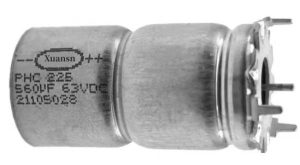
Figure 1-2 Actual picture of “Crown” type shell electrolytic capacitor
The shapes of axial lead type electrolytic capacitors and “crown” type shell electrolytic capacitors are shown in Figure 1-3 and Figure 1-4.

Figure 1-3 Appearance of axial leaded electrolytic capacitor
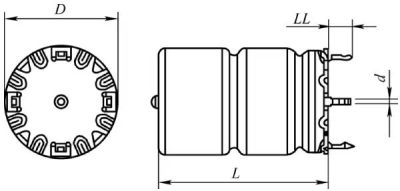
Figure 1-4 Appearance of “Crown” type shell electrolytic capacitor
The dimensions of axial leaded electrolytic capacitor and “crown” type shell electrolytic capacitors are shown in Table 1-1 and Table 1-2.
Table 1-1 Dimensions of axial leaded electrolytic capacitor

Table 1-2 “Crown” type shell electrolytic capacitor dimensions

2.XSA226/XSC226 series electrolytic capacitor data
The rated voltage of electrolytic capacitors required for automotive electronics is 25 to 80V.
XSA226/XSC226 series electrolytic capacitors are electrolytic capacitors that meet vehicle regulations vibration tests. The operating temperature range is -40~150°C. They have long life, low ESR and high ripple current characteristics.
The XSA226/XSC226 series electrolytic capacitors have the same data (including shell diameter and length), but the difference is the packaging form. XSA226 is an axial leaded type package, and XSC226 is a “crown” type housing package.
The performance overview of XSA226/XSC226 series electrolytic capacitors is shown in Table 1-3.
Table 1-3 Performance overview of XSA226/XSC226 series electrolytic capacitors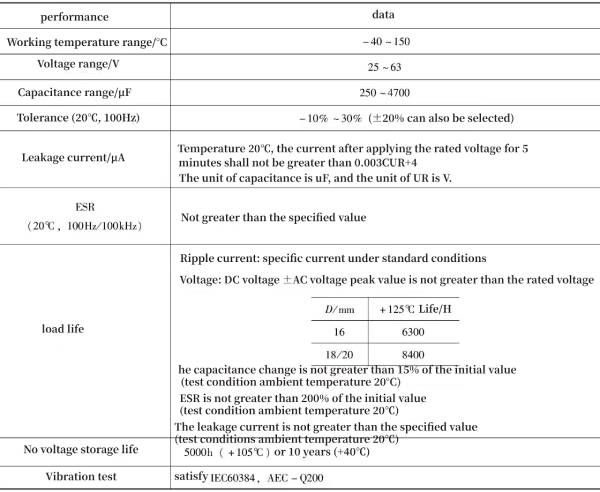 The frequency conversion coefficient is shown in Table 1-4.
The frequency conversion coefficient is shown in Table 1-4.
Table 1-4 Frequency conversion coefficient
The electrical parameters of XSA226/XSC226 series electrolytic capacitors are shown in Table 1-5.
Table 1-5 Electrical parameters of XSA226/XSC226 series electrolytic capacitors
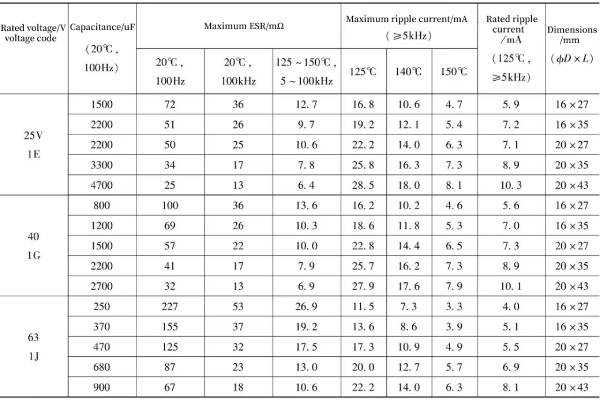
Summarize:
Axial Leaded Electrolytic Capacitor—This article mainly talks about the vibration resistance performance requirements of capacitors and the data of XSA226/XSC226 series electrolytic capacitors.To learn more about capacitors, please click:https://xuanxcapacitor.com

